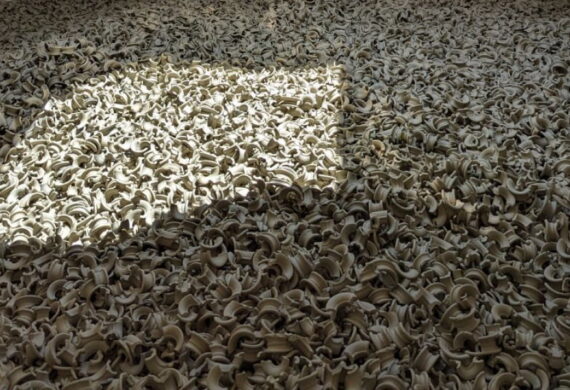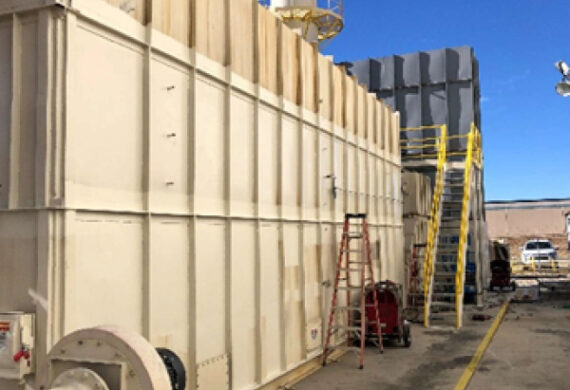In July 2005, TANN Corporation was awarded a contract to design a system to control emissions from a printing company that ran process 24/7 where downtime had to be kept to an absolute minimum. Because of these requirements, the engineers at TANN decided it would be best to design a system with three RTOs running in tandem.
There are numerous benefits to controlling a plant’s emissions with regenerative thermal oxidizers in tandem, as pictured below. In a system like this, multiple sources feed a central header, which then splits to feed the oxidizers. While the RTOs take process air from a common header, each one can be isolated for maintenance. This redundancy guarantees that even if one RTO is offline for routine maintenance, the others will continue to run, meaning the plant can continue to run as well.
This customer had ten sources to be controlled and three oxidizers. The controls and interlocks are run by a common programmable logic controller (PLC) which then communicates with the PLC on each RTO control panel. This common PLC calculates the total exhaust flow from each source and the total available capacity in the RTOs.
Tandem RTO Design Specifications:
- Printing Press Application
- 168,000 SCFM Process Stream
- 3x 56,000 SCFM RTOs
- 99% VOC Removal Efficiency
- Solvent Load: 3-10% LEL
- Individual stacks for each RTO
- 1,200 ft of insulated ductwork
- Puff capture tank
- Turnkey Installation
Key Advantages:
- Reduced Operating Costs
- Electrical
- Gas
- Less Production Downtime
- Less RTO Idle Time
- TANN Priority Logic
- Redundant RTO for Maintenance Downtime
The option to run multiple RTOs side-by-side can be beneficial in many situations. Customers will benefit the most from using RTOs in tandem on a process where any downtime will cause significant profit loss. Another benefit of running regenerative thermal oxidizers in tandem is that additional oxidizers can be added to an existing process.
Project Photos




